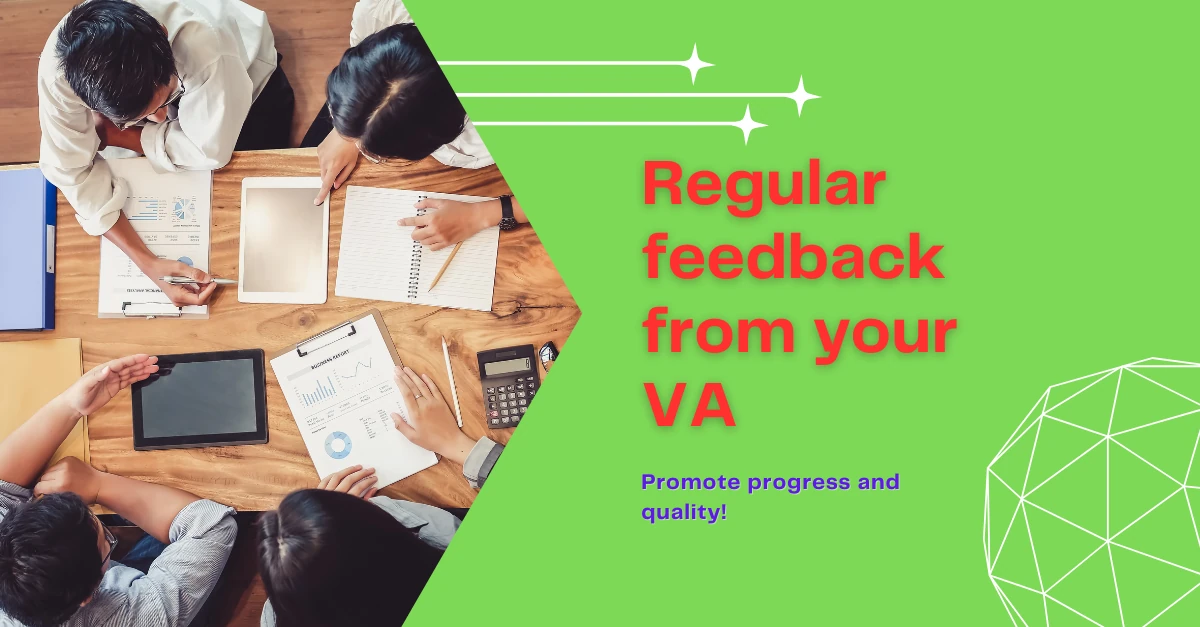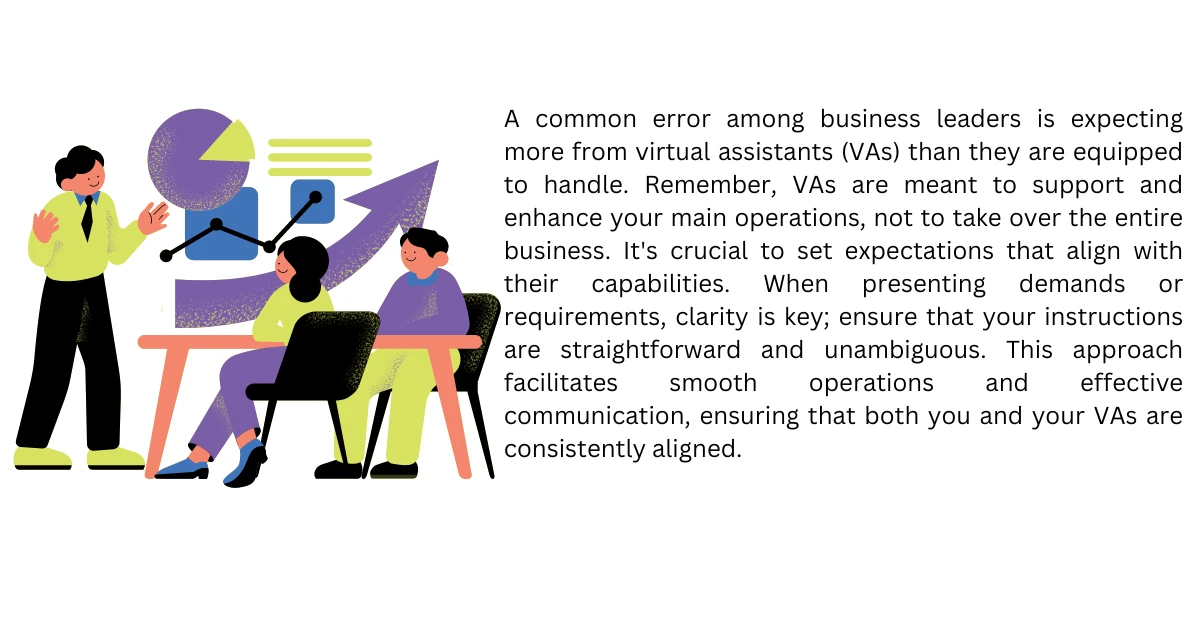Virtual assistance is an emerging field that’s rapidly gaining attention in today’s business landscape. As a cost-effective strategy that boosts productivity, hiring a virtual assistant (VA) is increasingly recognized as a smart move for businesses looking to scale efficiently.
See Also
Virtual assistants are independent contractors who specialize in these areas and can operate remotely, communicating and delivering work via phone or online platforms. With the rise of digital workspaces, finding and hiring a virtual assistant has become more accessible than ever.
However, small businesses and startups often encounter common pitfalls that can slow their growth and introduce technical challenges when integrating VAs into their operations. It’s crucial to navigate these potential mistakes to fully leverage the benefits of virtual assistance.
- Common Pitfalls that can affect VA-client relationship:
- Lack of Preparation
- The Oversight of Not Reviewing
- Skipping the Essential Training Phase
- Failed to Create Productive Environment
- Over-Involvement
- Ignoring the phase of Effective Planning
- Defaming Your Virtual Assistant’s Schedule
- Not Realizing when to terminate the relationship
- Misguided Reasons for Hiring a VA
- Failing to Optimize your VA’S Potential
- Final Thoughts
Common Pitfalls that can affect VA-client relationship:
Lack of Preparation
Being well-prepared is crucial when outsourcing any function, but it’s particularly vital when engaging with a virtual assistant (VA). Before initiating the hiring process, it’s essential to clearly define your goals.
Know exactly what you want to achieve with the assistance of a VA, have a preliminary plan in place, and be clear about your expectations. This groundwork not only smooths the onboarding process but also sets the stage for a productive relationship.

Outline a detailed plan that includes the duration of the VA engagement and specifies the tasks you need assistance with. If there are additional benefits or requirements you expect from your VA, it’s best to formalize these in writing to avoid any misunderstandings.
Moreover, providing a comprehensive job description is crucial to ensure both parties are aligned. This is especially important if your VA is based in a different cultural setting, as it helps mitigate potential misunderstandings and aligns expectations. Take your time to choose the right VA, and foster a strong, clear relationship from the start.
The Oversight of Not Reviewing
Once the initial setup with a virtual assistant (VA) is complete, the real work begins. Although VAs is typically capable of handling tasks efficiently, it’s crucial not to take their competency for granted. A common oversight many businesses make is neglecting to check in on the work done by their VAs. Over time, this lack of attention can become a significant issue.
As a client, it’s important to allocate regular slots in your schedule to review the VA’s work. Providing feedback is essential, and should be seen as part of a two-way communication process. Sometimes, VAs may not proactively report problems they encounter, especially if they are naturally reserved.
Early and consistent communication can help identify any obstacles they face, allowing you to provide necessary guidance. Repeating the entire process due to misunderstandings or errors benefits no one; instead, establishing a common understanding from the start is key.

Therefore, setting aside 30 to 45 minutes for feedback sessions during the early stages of collaboration is critical. These meetings help build a strong working relationship and ensure that the outcomes meet your expectations.
Read 5 Strategies for Successful VA-Client Relationship
Skipping the Essential Training Phase
A critical aspect that often goes overlooked is the importance of a training period for virtual assistants (VAs). Many entrepreneurs make the mistake of assuming that VAs, being experts, can dive straight into tasks without a proper briefing.
This misconception can lead to suboptimal outcomes. Providing formal training should be viewed not as a mere formality but as a vital investment in your business. Proper training equips VAs with the specific tools and knowledge needed to perform their tasks effectively, ensuring they add the most value to your operations.
Failed to Create Productive Environment
Often overlooked, the creation of a structured work environment is essential for ensuring smooth operations when working with virtual assistants (VAs). Setting up a clear, organized system is crucial for preventing workflow disruptions down the line.
For example, compiling a list of regular tasks and detailing the sequence of actions can minimize the need for constant back-and-forth communication. Organize and document necessary information, such as passwords for digital tasks, in a secure location for easy access. This organization not only saves time but also reduces effort.
Additionally, encourage your VAs to record any new procedures or important details as they work. This practice ensures a steady and uninterrupted exchange of information, helping to eliminate potential bottlenecks and keep operations running smoothly.
Over-Involvement
Once you’ve set up a solid working environment and organized all necessary details, it’s crucial to step back and avoid micromanaging the daily tasks of your virtual assistants (VAs). Micromanagement can give VAs the impression that they lack autonomy in their roles, which can be counterproductive.
Over-involvement defeats the purpose of delegating tasks to a VA, as it can lead to excessive time spent on minute details rather than on significant progress. This not only slows down the workflow but also gets mired in unnecessary discussions and debates, hindering overall efficiency. Maintaining a balance between oversight and autonomy is key to maximizing productivity and fostering a trusting professional relationship.
Ignoring the phase of Effective Planning
The term “crisis management” often refers to making last-minute demands without proper planning. Relying on emergency actions seldom yields positive outcomes, emphasizing the importance of adhering to well-thought-out plans.
The success of your projects often depends on how promptly you review and approve work. To avoid falling into a cycle of crisis management, ensure that everything progresses as planned and avoid deviations that could lead to last-minute scrambles.

Defaming Your Virtual Assistant’s Schedule
It’s not uncommon for your virtual assistant’s (VA) working hours to differ from yours, especially if they are located in a different time zone. This significant time difference means it’s unrealistic to expect them to always adjust to your schedule. Respecting their working hours and showing flexibility can help maintain a harmonious working relationship.
Moreover, keep in mind that your VA likely manages task for other clients as well. Acknowledging this and adjusting your expectations accordingly will lead to a more productive partnership.
For a successful collaboration, it’s essential to maintain a respectful and cordial relationship. Being considerate of your VA’s time and commitments ensures a comfortable and efficient working arrangement for both parties.
Not Realizing when to terminate the relationship
Understanding when to terminate a business relationship with a virtual assistant (VA) is crucial. Emotional attachments should not cloud business judgments, as maintaining an effective partnership is key to success.
Business owners need to closely monitor the performance and output of their VAs. If the work does not meet the expected standards, it may be time to professionally and amicably end the partnership and explore other options.
A common mistake is allowing a stagnant relationship to persist simply to avoid change. To prevent this, it’s important to stay proactive and avoid becoming complacent in your business interactions.
Misguided Reasons for Hiring a VA
Hiring a virtual assistant (VA) should be more than just following a trend or emulating a popular business strategy, such as those described in “The Four-Hour Work Week.”
Read more: The Four-Hour Work Week Strategy
It’s important to consider the specific benefits you aim to gain from working with a VA. Think about the tasks you want to delegate to free up your time, and focus on areas where you can apply that time to grow your business.
Conduct a thorough audit of your current time allocation. This will help you clearly identify which activities are consuming your day and how a VA can help streamline these responsibilities. By doing so, you ensure that hiring a VA is a strategic decision that truly aligns with your business objectives.
Failing to Optimize your VA’S Potential
When it comes to managing your virtual assistant (VA), allowing them the space to thrive can yield better results than constant oversight. Granting your assistant the freedom to accomplish tasks within their purview can streamline your workflow and lead to more successful delegation.
While starting with simpler administrative tasks is a logical step, don’t underestimate the potential of your VA. Embrace the opportunity to explore more creative assignments that can truly leverage their skills and expertise. By tapping into their full potential, you can enhance productivity and achieve better outcomes.
Final Thoughts
Working with a Virtual Assistant is a great way to boost productivity and make more money with less hassle. But it’s essential for business owners to use their skills wisely to turn a profit.
One of the best things about working with a VA is that you don’t need to be in constant contact, saving time for both parties. However, it’s crucial to avoid the mistakes we’ve discussed earlier.
Just as business owners need VAs, VAs also rely on business owners to succeed. Keeping this mutual dependency in mind is key to building strong relationships.
To succeed, honesty, clear communication, and understanding are vital. By planning ahead, sticking to schedules, and avoiding common mistakes, everyone can benefit. It’s about being smart, careful, and sensible, leading to success and profits for everyone involved.